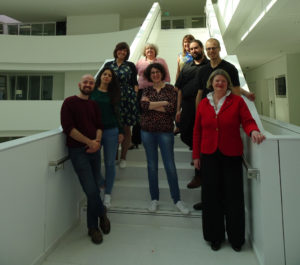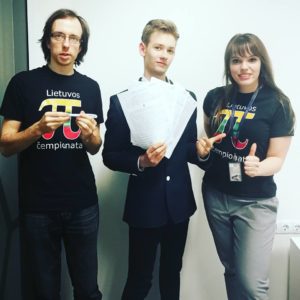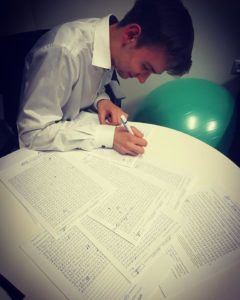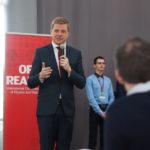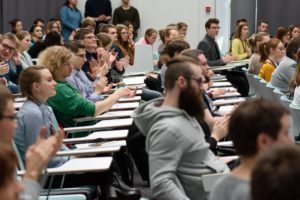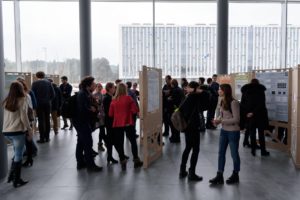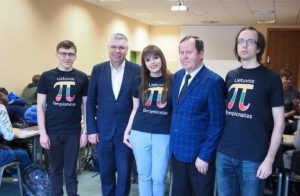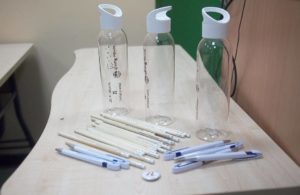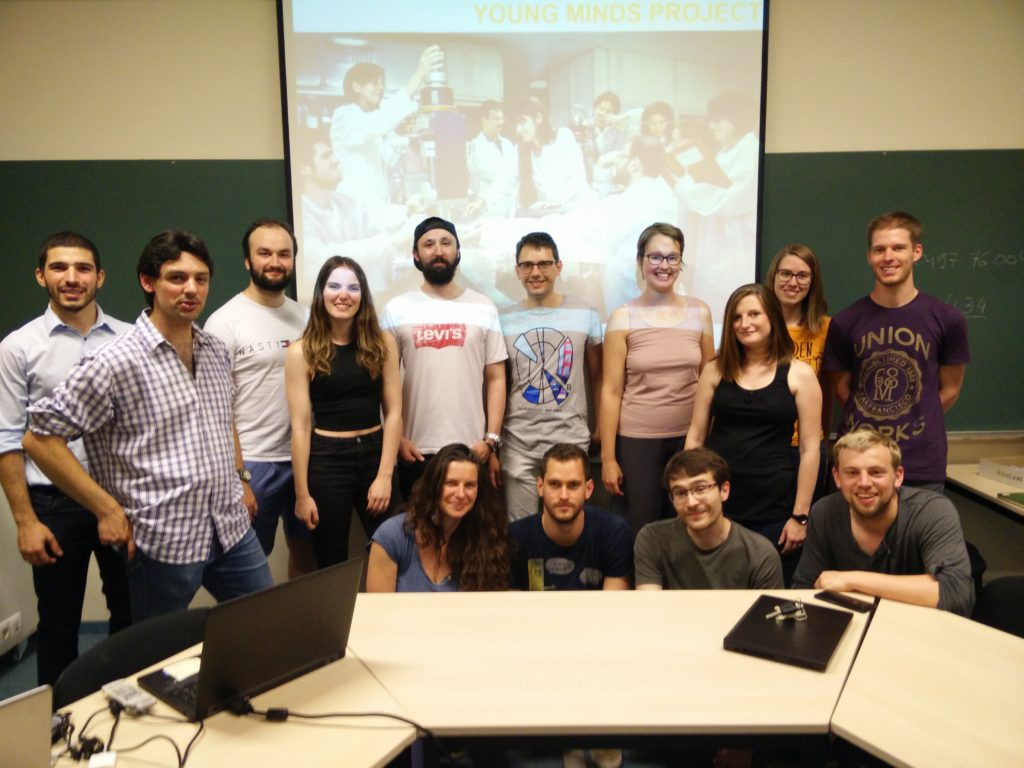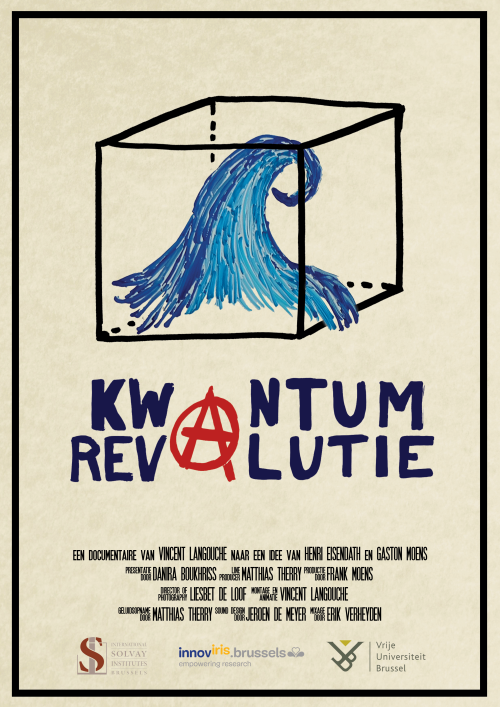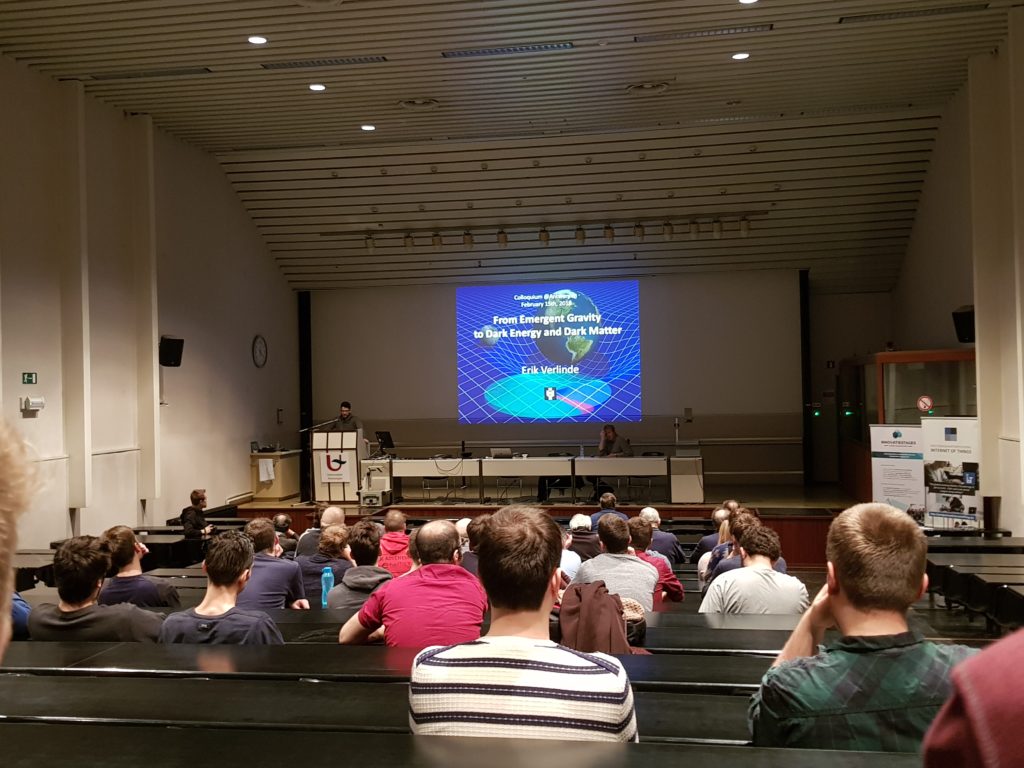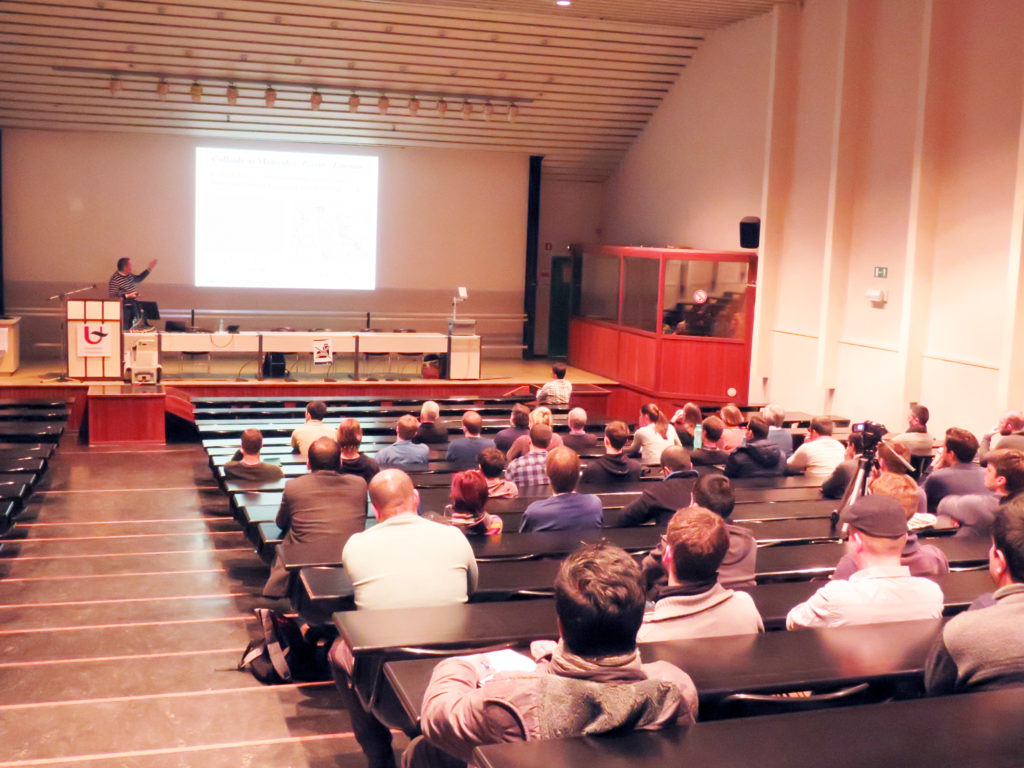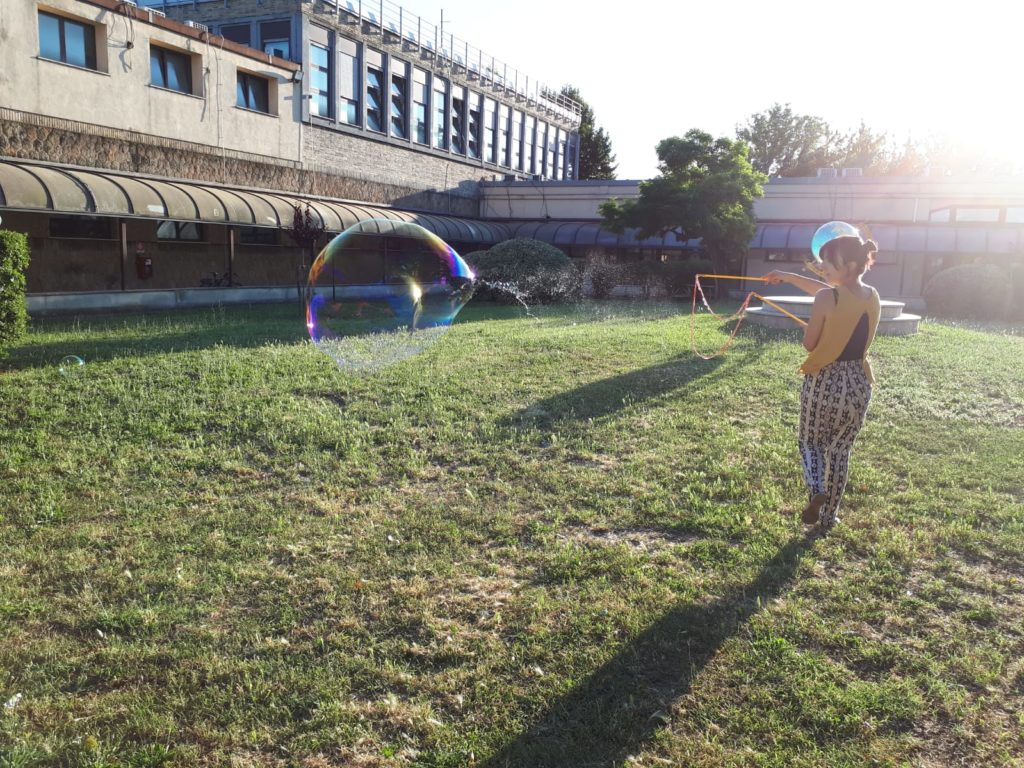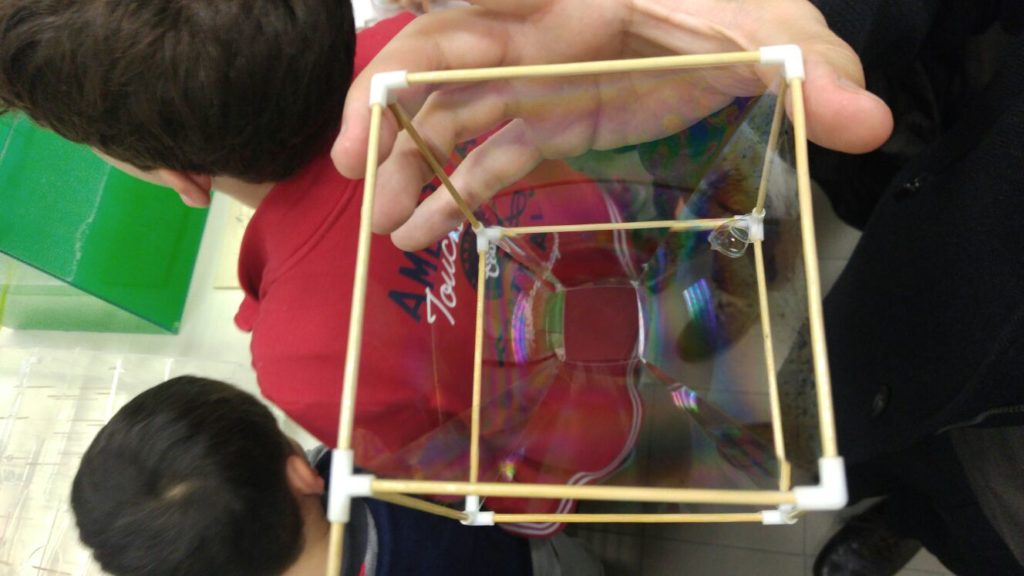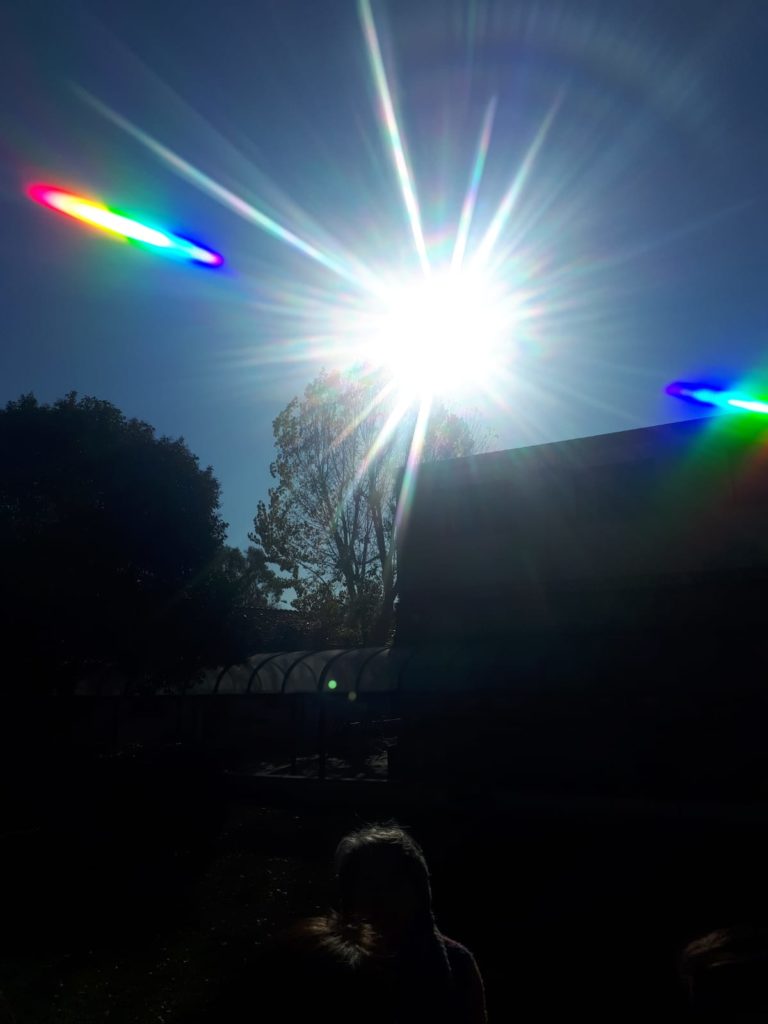After the cancelled leadership meeting in 2020, and in consideration of the unclear pandemic situation in spring 2021, the Action Committee decided to host the Leadership meeting 2021 as a virtual format. Taking place on May 7 the meeting brought together 55 section delegates, representing more than 30 sections and 21 countries from Europe and the Mediterranean. A particular highlight of the event was a panel discussion on career advice for young scientists, which featured 5 speakers from industry and academia that shared their insights and experiences with the Young Minds, as well as a scientific pub quiz that allowed the participants to refresh old and create new bonds in an informal atmosphere. Presentations of EPS YM programme manager Ophélia Fornari, EPS YM Chair Richard Zeltner and EPS President Luc Bergé briefed the delegates on the latest news and developments within EPS YM and EPS and were particular helpful for delegates of quite recent sections. In consideration of the large number of register delegates and the positive feedback the YM Action Committee received on both the programme and the implementation of the meeting it can be considered a large success.
EPS announces free membership for YM members
Following the discussion with section representatives, and in view of the YM 10th anniversary, we are happy to announce that EPS will grant free membership to all BSc and MSc students involved in the YM program.
To access the benefit, follow the instructions here.
YM Action Committee – Call for applications
The YM Action Committee is currently looking for a limited number of motivated candidates to join.
The Committee members are engaged in the management of the whole project, including the approval or rejection grant applications and the definition of the strategic long-term goals for the future development.
If you are interested, please send an email to ac(at)epsyoungminds.org with a one-page (maximum) application stating your motivation, your experience within the projet and other experiences you beleieve are relevant. A previous history within Young Minds or similar programs is not mandatory but highly appreciated.
Deadline for applications is November 30th, notifications will be sent out by the end of December.
New Action Committee members announced
Open Readings 2018
This year “Open Readings 2018” gathered above 306 presenters from more than 13 different countries: Norway, Sweden, Germany, Poland, Austria, Latvia, Serbia, Belarus, Czech Republic, Ukraine, Romania and Russia. Participants presented 11 different topics from Astrophysics and Computational Physics to Optoelectronics, Materials Science, Biomedicine, Chemistry, Nanoengineering etc.. Important statistics of participants: 96 Bachelor students, 97 Master students, 93 PhD students and 6 Postdocs. Through 4 days of the conference audience has listened to 56 oral presentations and watched over 250 poster presentations. This year we had equal ratio between female and male students. “Open Readings” invited 8 incredible lecturers from the World’s Top Scientists (USA, United Kingdom, Denmark, Belgium, Austria, Lithuania): Richard Brice Hoover – internationally known authority from NASA/Marshall Space Flight Center, Andrea Alù – inventor of novel waveguides, scattering devices and a cloaked sensor device (University of Texas at Austin), Peter Uhd Jepsen – leading scientist in the Terahertz Technologies & Biophotonics research group, Julija Krupič – developed a fascination with the way the brain maps the environment (University of Cambridge, Department of Physiology, Development and Neuroscience), Rasuolė Lukošė – is developing new sensing possibilities in graphene, Andrius Baltuška – alongside two colleagues, shared a world record for creating the shortest blip of light in history. They produced a flash of light lasting only 4.5 femtoseconds (0.000 000 000 000 004 5 seconds), Roel Baets – has led major cooperative research initiatives in silicon photonics in Europe, Audrius Alkauskas – works with point defects in 2D materials for quantum technologies.
“Open Readings 2018” took place from March 20-23rd, in the largest scientific research institution in Lithuania Center for Physical Sciences and Technology. It is the most advanced base for physical and chemical sciences, technology not only in Lithuania but in all Baltic States. It is currently headquartered in a state of the art four-stories building of 27 thousand square meters. Here not only the innovative science but also high technologies expedient for business and society needs are developed. European Physical Society Young Minds Section of Vilnius (EPS YM Vilnius) has contributed to organization of this conference. During the conference “11th Lithuanian Π day championship”, which gathered one hundred of students and University workers, was organized. This year Lithuania Guinness record was broken once again – Andrius Gegužis memorized 10 003 decimal places of Pi (He is 1st in Europe). Winner was writing over 15 hours! EPS YM Vilnius was invited to give an interview for mass media and national television. Lithuanian community has heard about our section. We hope to continue this tradition! Further science popularization is needed.
Section Starting
The Young Minds section of the University of Liège was created recently (May 2018). During the past months, our group has organized a “get-to-know-us” presentation for physics and space science students (masters, PhD and post-docs). It sparked great interest for the Young Minds activity in the Liège physics community. The objective was also to brainstorm ideas of activities to be organized for the upcoming academic year 2018-2019. This meeting, along with three other group reunions over two weeks, lead us to the idea of a networking event under the theme “Physics and Sport” (see the corresponding document for more details), during which we will test activities we plan using to create an outreach event destined to high school students. It also allowed us to gather motivated PhD students with experience in science outreach event (sci-fi movies analyses, broad audience communication, …) and effectively reinforce the initial team. We have also made contact with a local organization specialized in the field of science popularization at the University of Liège (“Réjouiscience” – http://rejouisciences.uliege.be) and they showed enthusiasm in collaborating with us in the organization of physics outreach events. We committed to participating in the next edition of their “Printemps des Sciences”, a yearly, high-impact science fair week for schools and general public in the Liège area. Members of our team are also dedicating their time to the construction of a website (www.ymliege.uliege.be) and a Facebook page (“YMLiège”) for more visibility. We created a public mail address: youngminds@uliege.be.
Our group takes the opportunity to be part of the Young Minds network very seriously, and we think we are off to a great start. We hope that the aforementioned activities testifiy our motivation for holding physics-related events and for growing the Young Minds network.
Film screening “Kwantumrevolutie”
In our latest event we held a screening of the Flemish documentary Kwantumrevolutie (Quantum Revolution). This documentary narrates the chronological discoveries concerning quantum mechanics, like Thomas Young’s double-slit experiment and Albert Einstein’s Photoelectric effect. The director of this documentary has a Master degree in both the Audiovisual Arts and Physics, which makes him the ideal person to narrate this topic. Since the physics behind all of these surprising experiments is explained clearly and shown intuitively, this movie forms a great introduction to quantum mechanics for those who are not yet familiar with its basic concepts. Moreover, the way these experiments are portrayed in a historical context also makes the documentary enjoyable for scientists who are more well-versed on this subject.
The documentary also focuses on the important role Belgium played in solving these quantum conundrums. The Belgian industrialist Ernest Solvay founded The International Solvay Institutes for Physics and Chemistry and facilitated the famous Solvay Conferences. During these conferences the issue with quanta, atoms, electrons and more, were thoroughly discussed by leading international scientists. The documentary narrates the story of the members of the first conferences and their important findings which have led to the quantum theory as we know it today. Not only does this documentary quench the thirst for historical and scientific knowledge, it also provides a prime example of how interdisciplinary and international collaborations can lead to a brilliant outcome.
In summary, this meticulous portrayal of the history and physical consequences of the quantum theory is an absolute must-see for anyone with an interest in modern physics, and we are proud to have reached a quite international and diverse public made up of members from the whole Science faculty with our screening.
Colloquium “From emergent gravity to the dark universe” by Prof. Erik Verlinde
On the 15th of February 2018, the Antwerp Young Minds section invited Professor Doctor Erik Verlinde to give a colloquium at the University of Antwerp about his work on the theoretical framework of emergent gravity. The main target audience were the students and researchers of the University of Antwerp physics department.
Professor dr. Erik Verlinde is a professor at the University of Amsterdam. His research focuses on the theoretical study of string theory, black holes and cosmology. In 2009, he introduced a theory of entropic gravity (also known as “emergent gravity”) which links the existence of gravity to quantum information theory. In 2011, he received the Spinoza price, one of the most prestigious awards available to Dutch scientists, for his various achievements and contributions to the field of cosmology.
In his talk, professor Verlinde explained that, while observed deviations from Newton’s laws or Einstein’s general relativity are commonly attributed to the presence of dark matter, these deviations can also be due to a change in the way gravity works in these circumstances. He then talked about a new theoretical framework in which gravity emerges from concepts of quantum information theory and discussed several applications of this approach. The colloquium as a whole was a great occasion for students to learn more about dark matter and the cosmological study of gravity, while at the same time providing the researchers of our department with more fundamental insights about professor Verlinde’s theory.
The lecture was followed by a reception, where the audience members and speaker could enjoy a drink and a bite. This also presented our students and researchers with the opportunity to speak with professor Verlinde in an informal setting.
Altogether, the colloquium was a great way for our university’s physics department to start off the second semester of the academic year.
Colloquium “Surprises in the self-assembly of particles” by Prof. Alfons van Blaaderen
On the 13th of December 2017, the Antwerp Young Minds section invited Professor Doctor Alfons van Blaaderen to give a colloquium at the University of Antwerp about his work on the self-assembly of nanoparticles. The main target audience were the students and researchers of the University of Antwerp physics department.
Professor dr. Alfons van Blaaderen is a professor at Utrecht University and the chair of the Soft Condensed Matter group of this university. His research focuses on the study of colloidal model systems and their self-assembly, in order to create, study and develop more advanced materials with special properties. Prof. van Blaaderen developed various new methods to manipulate the self-assembly of colloidal particles and was a pioneer in quantitative 3D real-space microscopic analysis of colloidal systems. In 2011, he was awarded the Peter Debye Prize by the Edmond Hustinx Foundation.
In his talk, professor van Blaaderen explained how self-assembly is a powerful way to create 3D colloidal crystals of metal or semiconductor nanoparticles, and showed us how this method can be used to tailor the properties of the resulting material. He first focused on self-assembly of particles into a spherical confinement, and then talked about how these results could be extended to particles with more complex shapes. The colloquium as a whole was a great occasion for students to be introduced to the field and applications of nanoparticles, while at the same time providing the researchers of our department with more profound insights about professor van Blaaderen’s experimental work.
The lecture was followed by a reception, where the audience members and speaker could enjoy a drink and a bite. This also presented our students and researchers with the opportunity to speak with professor van Blaaderen in an informal setting.
The colloquium received a good deal of positive comments and feedback from the students and researchers who attended it.
Let’s make fun with science: colors and soap bubbles
The EPS Young Mind Section of Rome was very productive in 2017 with the “Let’s make fun with science: Sun, light and colored shadows” project, aimed at discovering the concepts of light and colors through different experiments. This project has been partially founded by the 2017 Activity Grant and has been described in the last January 2018 Report.
In the first months of 2018, we ideally carried on this journey through the project “Let’s make fun with science: colors and soap bubbles”. In fact, even if apparently they are very simple, soap bubbles are the realization of many physical phenomena all together. First of all, their shape allows to explore the concept of surface tension of liquids. But even more, the colors appearing and disappearing on their surface force to wonder about the nature of light and colors. In particular, a deep understanding of how soap bubbles work requires the knowledge of many concepts related to waves, such as the Sun spectrum, the frequency, the wavelenght, but also interference and diffraction. For this reason, soap bubbles can be used at different levels: to create a fun activity for kids, to make physics students wonder about optics and Sun spectrum, and to give high school teachers a way through which they can explain interference to their students. The EPS Young Minds Section of Rome have tried to develop each of this ways.
We began with kids. During the event “Eyes on the Moon”, hosted by the Physics Department of Roma Tre University on February 23th, we used buckets, dishwashing liquid and straws in order to give children the opportunity to create their own soap bobbles of different sizes and shapes. With older people, including high school students, we organized afteroon activities adding a more detailed explanation of what happens in a soap film drawing optical waves on cardstocks, and using simple spectrometers to show the Sun spectrum. Moreover, with a more selected public, such as high school teachers or adults, we tried to explain what happens with a soap film on a can. In fact, if you try to make a soap film on one side of a can, and try to arrange it vertically, you will see that strips of different color will form. Their colors will alternanate, providing a great way to see, in practice, destructive and constructive interferences of waves.
At the end, the “Let’s make fun with science: colors and soap bubbles” project had more than 300 participants between primary, secondary schools students teachers and general public.

